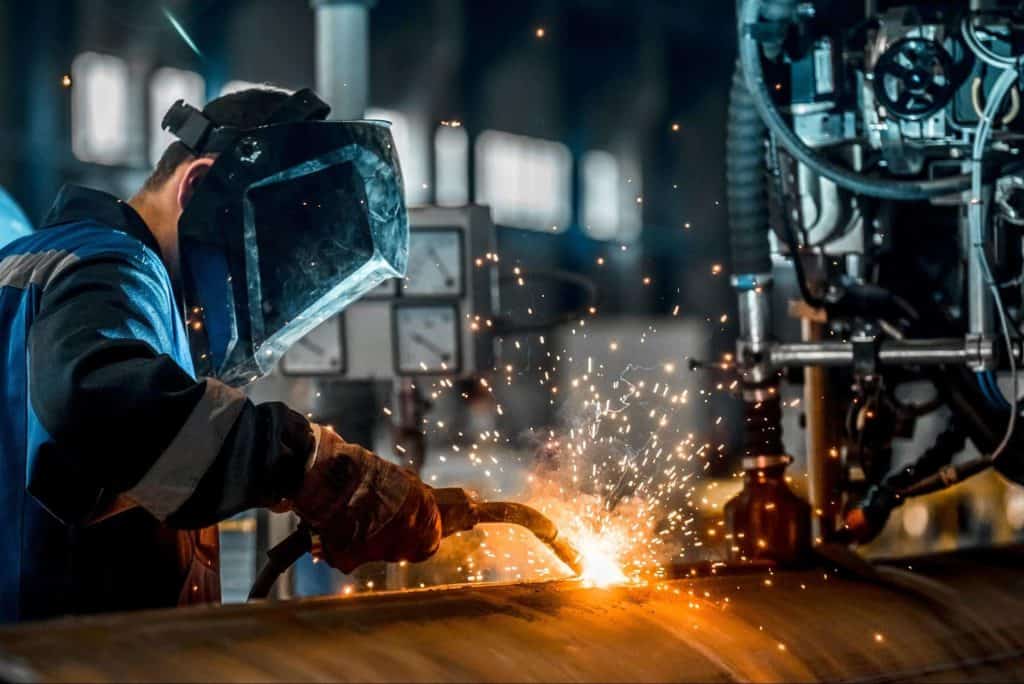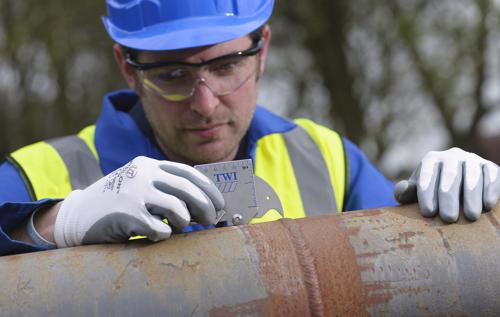A Comprehensive Overview to Welding Evaluation: Recognizing Criteria, Techniques, and Ideal Practices for Quality Guarantee

Welding assessment plays an essential function in making sure the structural honesty and security of welded components, necessitating a complete understanding of sector criteria such as those developed by AWS and ASME. As we explore these vital elements, it comes to be apparent that the effects of welding assessment prolong far beyond compliance, inviting a closer examination of exactly how these procedures form market standards and practices.
Relevance of Welding Assessment
Welding examination plays an essential duty in guaranteeing the stability and safety of bonded frameworks. It is a crucial procedure that validates that welds satisfy predefined requirements, which is important in different sectors, consisting of building, automotive, and aerospace. By conducting extensive examinations, prospective issues such as fractures, incomplete combination, and porosity can be identified early, protecting against disastrous failings that could cause crashes or pricey repairs.
The significance of welding examination expands beyond mere compliance with policies; it likewise cultivates trust fund with stakeholders. Customers and regulatory bodies anticipate guarantee that the frameworks they depend on are built to withstand operational tensions. Moreover, efficient welding examination practices add to long-term toughness and efficiency of the frameworks, eventually bring about lowered upkeep prices.
Additionally, welding evaluation promotes a culture of quality within companies, urging adherence to finest techniques and constant enhancement. By integrating inspection procedures right into the welding process, companies can enhance their reputation and establish themselves as leaders in quality control. Finally, the importance of welding inspection lies in its capacity to guard lives, make certain architectural reliability, and copyright industry standards, making it a crucial aspect of welding procedures.
Trick Market Criteria
Guaranteeing compliance with crucial sector requirements is important for maintaining the quality and safety and security of bonded structures. Various companies establish these criteria to advertise best techniques in welding and assessment. Among the most identified are the American Welding Culture (AWS) and the American Culture of Mechanical Engineers (ASME), which give comprehensive standards and requirements for welding procedures and evaluation criteria.
AWS requirements, such as AWS D1.1 for structural welding, overview needs for products, design, and screening to guarantee the stability of welds. ASME codes, consisting of ASME Area IX, control the qualification of welders and welding treatments, guaranteeing constant high quality in industrial applications. Globally, the ISO 3834 common stresses quality requirements for blend welding, offering a structure for companies to show conformity with international best practices.
Compliance with these requirements not only improves the integrity of bonded frameworks but also reduces dangers connected with architectural failings. Furthermore, adherence to industry standards is typically a requirement for governing authorizations and can significantly influence job requirements. Inevitably, understanding and applying these vital criteria are crucial for effective welding evaluation and high quality assurance.
Evaluation Techniques Introduction
Efficient welding assessment depends on a range of techniques designed to assess the quality and integrity of welds. These methods can be extensively categorized into damaging and non-destructive testing (NDT) approaches. Non-destructive screening strategies, which are extensively liked in the industry, permit the evaluation of welds without compromising the honesty of the product.
Amongst the most frequently utilized NDT techniques are aesthetic examination, ultrasonic testing, radiographic testing, and magnetic particle screening. Aesthetic evaluation is commonly the primary step in the analysis procedure, enabling inspectors to recognize surface area blemishes and analyze weld look at these guys grain profiles. Ultrasonic testing utilizes high-frequency acoustic waves to discover inner defects and gauge the thickness of welds. Radiographic screening involves the usage of X-ray or gamma-ray imaging to expose inner problems, while magnetic particle testing works for spotting surface area and near-surface gaps in ferromagnetic products.
Each strategy has its own advantages and restrictions, making it necessary for assessors to select the most proper technique based on the specific requirements of the job, the materials included, and the urgency of the welds being checked. This mindful option supports and ensures detailed analyses safety and security and top quality requirements in welding procedures.

Usual Defects and Their Implications
An extensive understanding of typical flaws in welds is vital for keeping architectural stability and safety and security in bonded building and constructions. Welding issues can significantly compromise the mechanical homes of the joint, causing failings that might threaten both personnel and equipment.
Common defects consist of porosity, which shows up as tiny gas pockets entraped in the weld metal, compromising the overall structure. Cracking is an additional widespread concern, usually arising from fast cooling or incorrect joint style, leading to stress concentrations that can cause disastrous failings. Incomplete fusion occurs when the weld metal falls short to effectively bond with the base material, creating weak factors that might cause splitting up under lots.
Other remarkable flaws include damaging, where the weld grain wears down the base metal, and slag incorporations, which can impede the weld's strength. Each of these flaws has particular implications; for circumstances, porosity can decrease ductility, while breaking straight impacts tensile toughness. Determining and recognizing these problems throughout inspection is crucial for executing rehabilitative steps and ensuring conformity with industry criteria, eventually protecting the architectural stability of welded settings up.
Ideal Practices for Quality Control
Executing ideal methods for quality assurance in welding procedures is essential for attaining optimal outcomes and decreasing problems. One essential method is the establishment of clear welding treatments that comply with industry standards and requirements. These procedures must consist of detailed guidelines concerning product selection, joint prep work, click for more and welding strategies to ensure consistency and high quality.
Normal training and accreditation of welding employees are also vital. Knowledgeable welders who understand the relevance of quality assurance are more probable to generate sound welds. In addition, implementing a robust assessment program, including both non-destructive and aesthetic screening (NDT), can assist determine flaws early in the procedure, permitting timely corrective actions.
Documentation plays a vital duty in quality assurance. Maintaining accurate documents of welding repairs, examinations, and specifications ensures traceability and liability. Additionally, employing sophisticated our website technologies such as automated welding equipments can enhance accuracy and minimize the potential for human mistake - Welding Inspection Gilbert Arizona.
Last but not least, promoting a society of quality within the company encourages workers to focus on high quality in their job. By adhering to these ideal practices, companies can enhance the stability of their welding processes, inevitably resulting in boosted product top quality and decreased prices connected with rework and repair services.

Final Thought
In final thought, welding examination plays a vital role in making sure the stability and safety and security of bonded structures. By carrying out best practices, organizations can boost dependability, lessen upkeep prices, and grow trust fund amongst customers, inevitably adding to effective welding procedures.
Furthermore, welding assessment advertises a society of high quality within organizations, motivating adherence to ideal methods and constant improvement. In conclusion, the importance of welding inspection lies in its capacity to guard lives, make certain architectural integrity, and promote industry criteria, making it an essential aspect of welding procedures.
Amongst the most recognized are the American Welding Culture (AWS) and the American Culture of Mechanical Designers (ASME), which offer comprehensive standards and requirements for welding procedures and assessment requirements.
Ultimately, understanding and executing these crucial requirements are essential for reliable welding evaluation and top quality assurance.
Effective welding examination depends on a range of techniques designed to analyze the high quality and integrity of welds. - Welding Inspection Gilbert Arizona